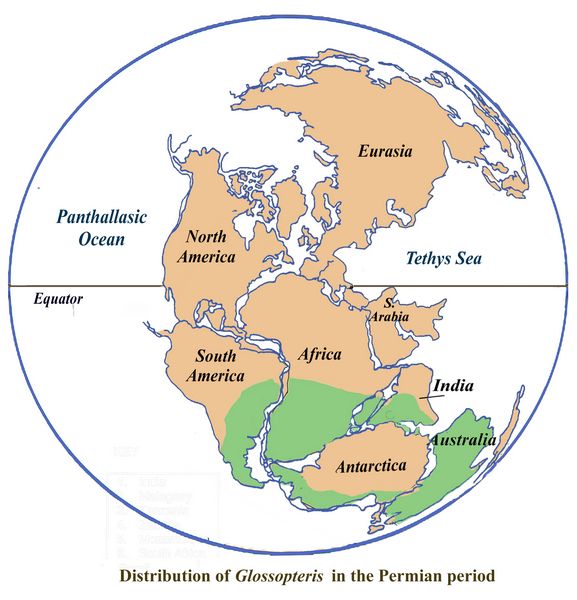Athena Review Image Archive ™
Glossopteris distribution in Permian

Map of Glossopteris distribution in Gondwanaland during the Permian (green areas).
Glossopteris was a dominant tree in the southern megacontinent known as Gondwanaland during the Permian period (298-252 mya). It became extinct during the mass extinction at the Permian-Triassic boundary (ca. 252-250 mya). It is classified as a seed fern belonging to the kingdon Plantae, the division Pteridospermatophyta, the order Arberiales, amd the family Glossopteridaceae. Glossopteris grew as bushes and trees up to 30 m tall. Its large, fern-like leaves were between 2 - 30 cm long.
This map shows the exclusively southern distribution of Glossopteris during the Permian. Fossils of Glossopteris
have been found in Brazil, Australia, Africa, Madagascar, India (with
70 taxa known), and Antarctica. Their distribution across
several now detached landmasses led the Austrian geologist Eduard
Suess to propose that the southern continents were once amalgamated
into a single supercontinent which he named Pangea. He named the
large southern land mass Gondwanaland after the district in India
where the fossil plant Glossopteris was found
.
References:
Brongniart,A.1828-38: Histoire des végétaux fossiles on reserches botaniques et géologiques sur les végétaux renfermés dans les diverses couches du globe. G. Dufour & Ed. D`Ocagne; Paris
Copyright © 1996-2020 Rust Family Foundation (All Rights Reserved).